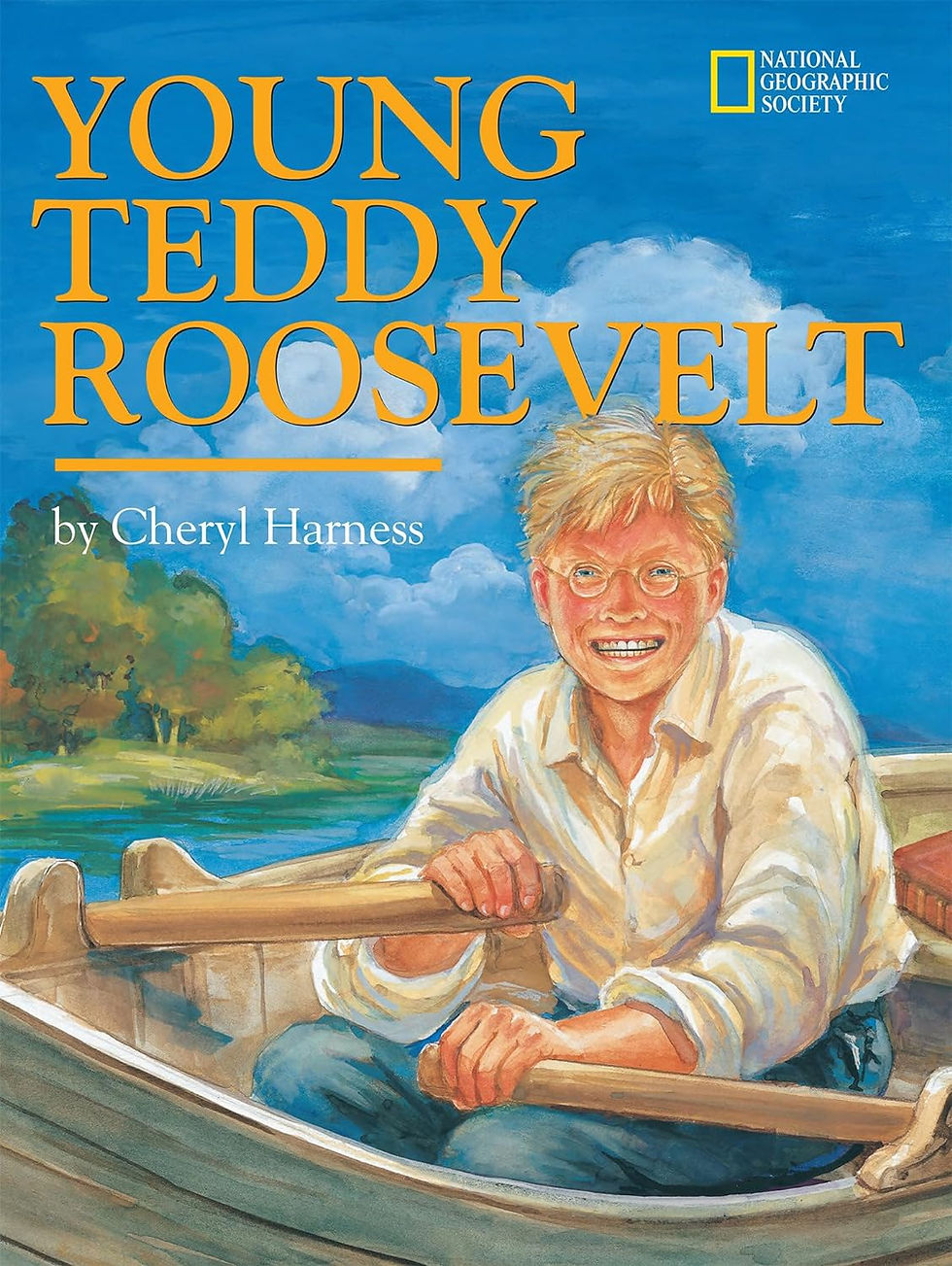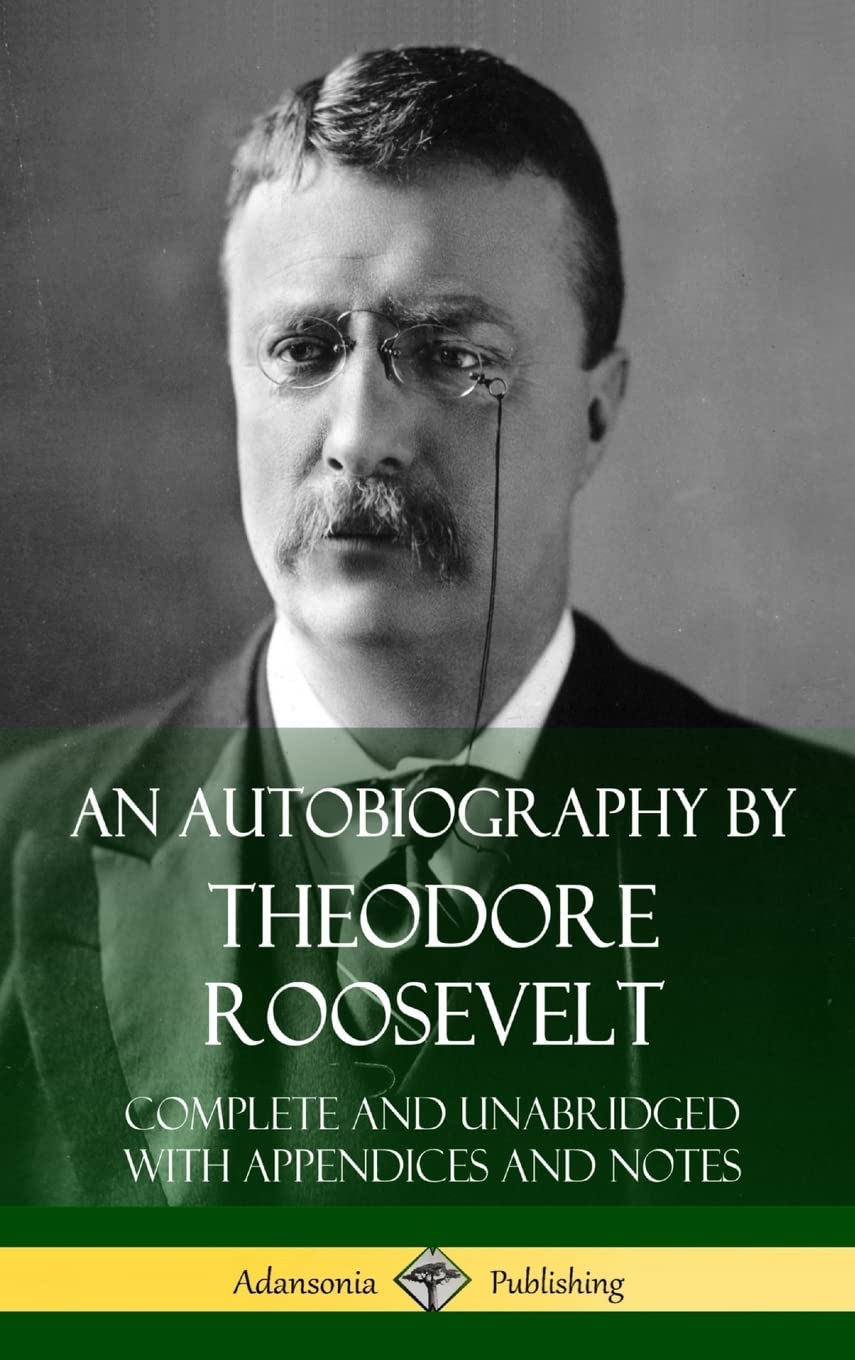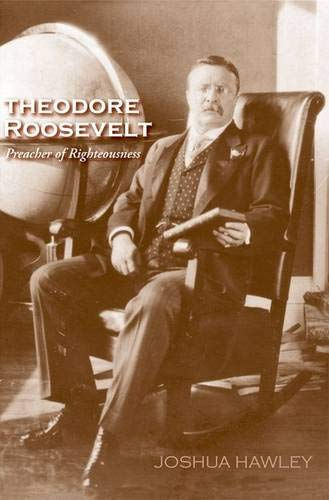Conservation is conservative. The two words share the same etymology – from the Latin 'conservare' (to keep, preserve, keep intact, guard) – and, in the United States, they share the same roots. Those roots go back to Theodore Roosevelt.

Born in 1858, Roosevelt came-of-age during a time when America itself was first rising on the global stage. Our leaders then were thinking big thoughts. None bigger, nor bolder, than Roosevelt. According to Daniel Ruddy in Theodore the Great: Conservative Crusader, “His philosophy centered on increasing the political power of the American people and limiting the build-up of the ‘invisible government’ of party bosses, corporate trusts, and corporate lobbyists.”
With that in mind, Roosevelt championed reforms that limited corporate interests and conserved public lands for future generations. As a result, no American president…perhaps no single American…is more associated with nature, wildlife, and preservation than he.
It’s easy to understand why. His story is seminal…endearing as well as enduring. Physical limitations early in life forced him outside for his health and focused his attention on the nature of things. He began collecting specimens of the species he found. At age eight, in 1867, he started the 'Roosevelt Museum of Natural History.' He was a generous lad, too, sharing his collection with others. In 1871, he donated part of his collection to the newly-established American Museum of Natural History, which had been co-founded by his father.
Already an accomplished ornithologist, Roosevelt studied Natural History at Harvard, where he used his off-campus apartment to continue collecting. In 1882, after he was elected to the New York State Legislature, Roosevelt donated the bulk of the Roosevelt Museum of Natural History to the Smithsonian Institution.
According to the PBS Series: The American Experience: Theodore Roosevelt and the Environment, by the mid-1800's, many of the people ‘closest to nature’ had come to realize that the wilderness could only suffer so much exploitation. Hunters, miners, and timber cutters threatened not only individual species, but entire ecosystems. But forward-thinking sportsmen began to organize for the conservation of game and game habitat. Theodore Roosevelt was one of those conservationists.
In 1887, Roosevelt and editor George Bird Grinnell of Forest and Stream Magazine founded the Boone and Crockett Club, advocating for scientific forest management, clean water, and restricted use of natural resources. The Club promoted both the enjoyment of hunting and the study and preservation of game animals and their habitats.
Perhaps the most significant success was the battle for Yellowstone. Again, according to PBS, while Yellowstone had been officially designated a national park, the designation included no provision for its protection from commercial exploitation. When mining and railroad interests threatened to seriously damage the park, Boone and Crockett rose to the defense with editorials, speaking engagements, and lobbying. In 1894, President Gover Cleveland signed a bill protecting Yellowstone.
So, from a frail, sickly, and myopic child grew an impassioned, active, and dynamic leader. And conservation was his tour de force.
Elected as William McKinley’s vice president in 1901, Roosevelt became president himself when McKinley was shot early in his second term on September 6, 1901, passing away eight days later on September 14. As our 26th president – and our ninth Republican president* – Roosevelt made conservation active.
In his 'Conservation as a National Duty' speech to the Conference of Governors, delivered at the White House on May 13, 1908, he said: “We have become great because of the lavish use of our resources. But the time has come to inquire seriously what will happen when our forests are gone, when the coal, the iron, the oil, and the gas are exhausted, when the soils have still further impoverished and washed into the streams, polluting the rivers, denuding the fields and obstructing navigation.”
Between 1901 and 1909, he established 230 million acres of public lands, including: National forests (150), the first federal bird reservation and game preserves (55), national parks (5), and the first national monuments (18). The intent was to manage resources so that we could continue to harvest natural resources, but at the same time ensure their continued vitality and abundance.
National Parks
National parks are created by an act of Congress. Roosevelt worked with Congress to establish these sites:
Crater Lake National Park (OR) - 1902
Wind Cave National Park (SD) - 1903
Sullys Hill (ND) - 1904 (now managed by USFWS)
Platt National Park (OK) - 1906 (now part of Chickasaw National Recreation Area)
Mesa Verde National Park (CO) - 1906
Added land to Yosemite National Park (CA)
National Monuments
Roosevelt signed the Act for the Preservation of American Antiquities on June 8, 1906. This law – also known as the Antiquities Act or the National Monuments Act – gave the president discretion to "declare by public proclamation historic landmarks, historic and prehistoric structures, and other objects of historic and scientific interest... to be National Monuments."
Without the need for congressional approval, Roosevelt could more easily establish national monuments. These were the sites he dedicated as national monuments:
Devil's Tower (WY) - 1906
El Morro (NM) - 1906
Montezuma Castle (AZ) - 1906
Petrified Forest (AZ) - 1906 (now a national park)
Chaco Canyon (NM) - 1907
Lassen Peak (CA) - 1907 (now Lassen Volcanic National Park)
Cinder Cone (CA) - 1907 (now part of Lassen Volcanic National Park)
Gila Cliff Dwellings (NM) - 1907
Tonto (AZ) - 1907
Muir Woods (CA) - 1908
Grand Canyon (AZ) - 1908 (now a national park)
Pinnacles (CA) - 1908 (now a national park)
Jewel Cave (SD) - 1908
Natural Bridges (UT) - 1908
Lewis & Clark Caverns (MT) - 1908 (now a Montana State Park)
Tumacacori (AZ) - 1908
Wheeler (CO) - 1908 (now Wheeler Geologic Area, part of Rio Grande National Forest)
Mount Olympus (WA) - 1909 (now Olympic National Park)
In 1907, Roosevelt also established Chalmette Monument and Grounds, a site of the Battle of New Orleans, now part of Jean Lafitte National Historical Park.
The U.S. Forest Service
In 1905, Roosevelt created the U.S. Forest Service with Gifford Pinchot as its first Chief Forester. According to ConservationHistory.org, Roosevelt and Pinchot (perhaps his most-trusted advisor) sought a new term for a new era of environmental action in the early 20th century. They settled on “conservation,” and its popularization is one of his most important legacies. In 1907, in an address to the Deep Waterway Convention in Memphis, Tennessee, Roosevelt declared: “The conservation of natural resources is the fundamental problem. Unless we solve that problem, it will avail us little to solve all others.”
Concerned about the devastation of western lands, renowned preservationist John Muir invited President Roosevelt to camp with him in Yosemite National Park. After his visit, Roosevelt commented: "It was like lying in a great solemn cathedral, far vaster and more beautiful than any built by the hand of man."
Roosevelt stood in the breach, fending off those who sought to exploit the natural world for personal gain. Congress, for example, fought his efforts to create a national park at the Grand Canyon. Roosevelt used his executive power to protect it as a national monument.
On May 6, 1903, in his 'Remarks at Grand Canyon, Arizona,' Roosevelt noted: “In the Grand Canyon, Arizona has a natural wonder which is in kind absolutely unparalleled throughout the rest of the world. I want to ask you to keep this great wonder of nature as it now is. I hope you will not have a building of any kind, not a summer cottage, a hotel or anything else, to mar the wonderful grandeur, the sublimity, the great loneliness and beauty of the canyon. Leave it as it is. You cannot improve on it. The ages have been at work on it, and man can only mar it.”
During his presidency, laws were passed and a system of legal and financial support was established for wildlife conservation and the protection of natural habitats in our country. This system is now referred to as the North American Model of Wildlife Conservation. This model is based on seven key principles:
Wildlife is a resource held in public trust. It is the people's responsibility through government to hold wildlife in trust for all.
There are no markets for wild game. The public must protect against elites who would appropriate wildlife for themselves (as occurred in Europe).
Wildlife is allocated by democratic rule of law. Everyone has a fair and equitable opportunity under the law to join the hunt.
Wildlife may be killed only for legitimate purposes. There can be no ‘market gunning.’
Wildlife is considered an international resource. The take of species that cross international boundaries is managed by treaty.
Every person has an equal opportunity under the law to participate in hunting. There is no regard for wealth, prestige, or land ownership.
Science is the proper tool for discharge of wildlife policy. Policy should be based on science.
Again, Conservation is Conservative.
In 1912, well after his second term had ended, Roosevelt said: “There can be no greater issue than that of conservation in this country. Just as we must conserve our men, women, and children, so we must conserve the resources of the land on which they live.”
He considered the enactment of a conservation program his greatest contribution to American domestic policy, a shining example for the world.
Roosevelt the President may be most-remembered for his brash foreign policy. But during his tenure, his bullishness for conservation left an equally lasting impact and a natural legacy the like of which had never before been seen.
Chester County Republicans take seriously the challenge to protect our environment. It is a matter of common sense for our people, our families, and our businesses. And it is the right thing to do.
If you’d like to delve deeper, we recommend:
For Kids
by Don Brown
Young Teddy Roosevelt by Cheryl Harness
For Adults
Theodore the Great: Conservative Crusader by Daniel Ruddy
by Darrin Lunde
by H. Paul Jeffers
by David McCullough
Theodore Roosevelt: Preacher of Righteousness by Joshua David Hawley
by Douglas Brinkley
by Stephen J. Mexal
by Edmund Morris
by Edmund Morris
The Bully Pulpit: Theodore Roosevelt, William Howard Taft, and the Golden Age of Journalism by Doris Kearns Goodwin
Theodore Roosevelt in the Badlands: A Young Politician's Quest for Recovery in the American West by Roger L. Di Silvestro
*List Of Republican Presidents (Courtesy of the World Atlas)
Rank | President | Term Served |
1 | Abraham Lincoln (Ran under National Union Party in 1864) | 1861-1865 |
2 | Andrew Johnson* (National Union Pary) | 1865-1869 |
3 | Ulysses S. Grant | 1869-1877 |
4 | Rutherford B. Hayes | 1877-1881 |
5 | James A. Garfield | 1881-1881 |
6 | Chester A. Arthur | 1881-1885 |
7 | Benjamin Harrison | 1889-1893 |
8 | William McKinley | 1897-1901 |
9 | Theodore Roosevelt | 1901-1909 |
10 | William Howard Taft | 1909-1913 |
11 | Warren G. Harding | 1921-1923 |
12 | Calvin Coolidge | 1923-1929 |
13 | Herbert Hoover | 1929-1933 |
14 | Dwight D. Eisenhower | 1953-1961 |
15 | Richard Nixon | 1969-1974 |
16 | Gerald Ford | 1974-1977 |
17 | Ronald Reagan | 1981-1989 |
18 | George H.W. Bush | 1989-1993 |
19 | George W. Bush | 2001-2009 |
20 | Donald Trump | 2017-2021 |
*Andrew Johnson ran under the National Union Party as Vice President to Abraham Lincoln, the name used by the republican party to attract War Democrats and Unionists. Andrew Johnson was a War Democrat himself and after his term ended many War Democrats joined the Republican Party while others returned to the Democrats. The 1864 election of the National Union Party is considered a "Republican" ticket. Therefore technically Andrew Johnson became president under a Republican ticket and should be considered a Republican President.
















Comments